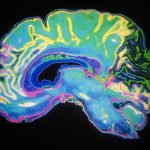Teen Sleep: Getting It Right
Catherine Darley, ND
Remember being a teenager, staying up late, and sleeping till noon on the weekends? Most likely you have teen patients in your clinic who are experiencing the same sleep pattern. Unfortunately, because school hours are not aligned with teen circadian physiology, many teens must wake before they are ready. As a result, they are sleep-deprived, and with negative consequences. Studies focused on sleep deprivation show that those with less than 8 hours of sleep have a 50% increase in risk-taking behaviors, including smoking, sex, and use of marijuana or alcohol.1 Teens are also susceptible to the many known health consequences of chronic partial sleep deprivation seen in adults. The full range of negative health effects of sleep deprivation could be an extensive article in itself.
One could justifiably argue that teens are the most sleep-deprived age group in our society. The statistics are powerful, with 41% of middle school students and only 13% of high school students getting the 8.5-9.5 hours of sleep they need each night. Yet there is a huge disconnect between adult perceptions and what is really happening: 71% of parents think their child gets enough sleep.2
Causes of Teen Sleep Deprivation
Some people blame teens’ late-night hours on habits such as staying up late texting with friends or gaming. However, there are clear physiological reasons for this distinctive sleep pattern.
- First, at the onset of puberty (often before other pubertal changes) the circadian rhythm shifts to a later chronotype. This determines a person’s most likely sleep time. Girls shift at a younger age than boys, and the shift in boys is generally more pronounced.3
- Second, during this stage of development there is a decrease in the sleep drive, making it more difficult to fall asleep than it is for younger children.4
- Third, there is a decrease in the melatonin pulse as children move from Tanner Stage 1 to the fully-mature Tanner Stage 5.5
Fortunately, there are some strategies you can use to help your individual teen patients sleep on an earlier schedule, as well as public health initiatives that help the entire population of teens.
Public Health Policies to Improve Teen Sleep
Over the last couple of decades, there has been a growing movement to align school-bell times with teens’ body clock. Many conclusive studies show that when secondary schools start later, teens get more sleep.6 The first large-scale effort to adopt appropriate bell times was in Minnesota in the 1990s. In 2014, after years of study, the American Academy of Pediatrics issued a position statement that “strongly supports the efforts of school districts to optimize sleep in students and urges high schools and middle schools to aim for start times that allow students the opportunity to achieve optimal levels of sleep (8.5-9.5 hours)”.7 In 2015 the Centers for Disease Control & Prevention (CDC) released their report finding that “most U.S. middle and high schools start the school day too early.”8 The non-profit Start School Later, Inc, was founded in 2011 to nationally advocate for biologically appropriate bell times, and has chapters in many states. (I myself have been involved in my local Seattle chapter and in national efforts).
Case Study
Alex, an 11-year-old boy, had insomnia for 2 years. His parents brought him in when they realized they’d been increasing his dose of melatonin over time. His bedtime was 9 PM, but it seemed like “forever” before he fell asleep, and he’d get up repeatedly during that time, asking for his parents help. He would eventually fall asleep at 10 or 11 PM and sleep soundly until the morning, when his parents woke him up for school at 6:30 AM, which was difficult. During the school year Alex would average 9 hours of sleep when treated with 1.25 mg melatonin, though he identified as doing best with 10 hours of sleep per night. When allowed his own schedule on breaks or summer vacation, he would go to bed at 11:45 PM, fall asleep easily, and sleep until 11 AM.
A Protocol to Help Students Sleep Earlier
Using precisely-timed bright light and melatonin, the circadian rhythm can be advanced earlier. This strategy uses the multiple Phase Response Curves (PRC), which describe the effect on the circadian phase when either bright/dim light9 or melatonin supplementation10 is administered at specific times. Here are a couple of notes to keep in mind when using PRCs:
- Time of administration of light or melatonin is relative to the patient’s natural sleep times.
- The effect of light switches from being delaying to advancing at the time of the core body temperature minimum. Although core body temperature minimum can be estimated to be approximately 4 hours before the natural wake-time in an adult, it is closer to 2 hours before the natural wake-time in teens.11 This is important to know as you decide when to administer light therapy, as providing it before the body temperature minimum will actually cause the body clock to shift even later, and symptoms to worsen.
Alex’s Treatment
Table 1 illustrates how Alex was treated using this approach.
Table 1. Sample Schedule Using Phase Response Curves
| Day | Melatonin Time (0.5 mg) | Bedtime | Wake/Light Time |
| 1 | 5:30 PM | 11:30 PM | 10 AM |
| 2 | 5:00 PM | 11:00 PM | 9:30 AM |
| 3 | 4:30 PM | 10:30 PM | 9:00 AM |
| 4 | 4:00 PM | 10:00 PM | 8:30 AM |
| 5 | 3:30 PM | 9:30 PM | 8:00 AM |
| 6 | 3:30 PM | 9:30 PM | 7:30 AM |
| 7 | 3:30 PM | 9:30 PM | 6:30 AM |
When melatonin is used in this manner it functions as a chronotrope, or “time setter,” not as a hypnotic. With that said, we don’t want the person to become acutely sleepy, and therefore use low doses such as 0.5 mg. Bright light therapy can involve either the use of a light box that provides 10 000 lux full-spectrum light, or simply going outside into the daylight for 30 minutes. Alex was advised to avoid bright light from electronics during the hour before bedtime.
Follow-Up, 2 Weeks Later
At the return appointment 2 weeks later, Alex reported falling asleep within 5-10 minutes and sleeping through the night. He found it easier to wake when he’d gotten 10 hours of sleep, though he still found it hard to wake for early-morning band practice at 6:30 AM. His parents also noticed an improvement in his mood and energy, and that it was easier for him to get out of bed in the mornings.
Advice was given to stay on schedule, even on weekends, to discontinue the melatonin after another 2 weeks, and to anticipate this “night owl” tendency to persist until his early 20s. No follow-up appointment was needed.
Additional Tips
Here are a few further considerations as you use this approach:
- It is thought that the body clock can shift at most an hour each day. In my clinical experience, I find better success with adjusting by 30 minutes per day at most. This gives plenty of buffer around the estimated core body temperature minimum, and also allows patients to adjust their lifestyle to allow an earlier bedtime and more total sleep time.
- Because of the critical importance of avoiding light before the body temperature minimum, begin this approach during a week when they can wake up at their natural time the first day, then move progressively earlier by 30 minutes per day. Starting treatment at the beginning of a school holiday, or providing a medical excuse for missing the morning of each school day for a week, may be necessary.
- Because the light therapy is the most powerful intervention, it is often successful, in my experience, to withdraw the melatonin supplementation once the patient is in a good sleeping pattern for several weeks.
- Remember that the circadian rhythm is intrinsic, thus treatment must be continued. During the last visit, counsel your patient about how to use the protocol again on their own if they gradually shift to later sleep habits. This shift can often occur over the summer break from school.
Delayed Sleep-Wake Phase Disorder
As mentioned earlier, people generally start shifting to an earlier chronotype in their early 20s. For some people, though, this late-night tendency may persist into adulthood as Delayed Sleep-Wake Phase Disorder. Because this disorder can cause difficulty falling asleep when sleeping according to an earlier required schedule, it should be included in the differential diagnosis for a patient presenting with insomnia symptoms. Treatment of all ages can be done using the same protocol of precisely-timed bright light and melatonin.
The American Academy of Medicine suggests that all 5 of the following criteria [listed verbatim] be met for a diagnosis of Delayed Sleep-Wake Phase Disorder12:
- There is a significant delay in the phase of the major sleep episode in relation to the desired or required sleep time and wake-up time, as evidenced by a chronic or recurrent complaint by the patient or a caregiver of inability to fall asleep and difficulty awakening at a desired or required clock time.
- The symptoms are present for at least 3 months.
- When patients are allowed to choose their ad libitum schedule, they will exhibit improved sleep quality and duration for age and maintain a delayed phase of the 24-hour sleep-wake pattern.
- Sleep log and, whenever possible, actigraphy monitoring for at least 7 days (preferably 14 days) demonstrate a delay in the timing of the habitual sleep period. Both work/school days and free days must be included within this monitoring.
- The sleep disturbance is not better explained by another current sleep disorder, medical or neurological disorder, mental disorder, medication use, or substance use disorder.
Sleep as a Foundation of Health
Part of our philosophy as naturopathic physicians is to establish a foundation of health, and sleep is an important part of that. Because of the circadian delay that occurs as part of puberty, and the misalignment of teen schedules with that physiology, teens as a population are sleep-deprived. Using treatment strategies to help teens sleep on their required schedule will help them establish the basis for health, and reap all the benefits that sufficient sleep provides.
 Catherine Darley, ND, is the founding director of The Institute of Naturopathic Sleep Medicine in Seattle, WA. Dr Darley is passionate about the role that healthy sleep plays in overall health and quality of life, and is pioneering the field of naturopathic sleep medicine. She provides comprehensive care for people of all ages with sleep problems, specializing in insomnia and circadian rhythm disorders. In addition to providing patient care, she educates the public and conducts corporate fatigue management programs.
Catherine Darley, ND, is the founding director of The Institute of Naturopathic Sleep Medicine in Seattle, WA. Dr Darley is passionate about the role that healthy sleep plays in overall health and quality of life, and is pioneering the field of naturopathic sleep medicine. She provides comprehensive care for people of all ages with sleep problems, specializing in insomnia and circadian rhythm disorders. In addition to providing patient care, she educates the public and conducts corporate fatigue management programs.
References
- O’Brien EM, Mindell JA. Sleep and risk-taking behavior in adolescents. Behav Sleep Med. 2005;3(3):113-133.
- National Sleep Foundation. Sleep in America Poll; 2006 Poll. Summary of Findings. Available at: https://sleepfoundation.org/sites/default/files/2006_summary_of_findings.pdf. Accessed May 15, 2016.
- Roenneberg T, Kuehnle T, Pramstaller PP, et al. A marker for the end of adolescence. Curr Biol. 2004;14(24):R1038-R1039.
- Jenni OG, LeBourgeois MK. Understanding sleep-wake behavior and sleep disorders in children: the value of a model. Curr Opin Psychiatry. 2006;19(3):282-287.
- Crowley SJ, Acebo C, Carskadon MA. Human puberty: salivary melatonin profiles in constant conditions. Dev Psychobiol. 2012;54(4):468-473.
- Wahlstrom K. Changing times: findings from the first longitudinal study of later high school start times. NASSP Bull. 2002;286(633):3-
- American Academy of Pediatrics. Policy Statement: School Start Times for Adolescents. Pediatrics. 2014;134(13):642-649. Available at: http://pediatrics.aappublications.org/content/pediatrics/early/2014/08/19/peds.2014-1697.full.pdf. Accessed May 15, 2016.
- Centers for Disease Control and Prevention. Schools Starts Too Early. Last updated August 13, 2015. CDC Web site. http://www.cdc.gov/features/school-start-times/index.html. Accessed May 15, 2016.
- St Hilaire MA, Gooley JJ, Khalsa SBS, et al. Human phase response curve to a 1 h pulse of bright white light. J Physiol. 2012;590(13):3035-3045.
- Burgess HJ, Revell VL, Molina TA, Eastman CI. Human phase response curves to three days of daily melatonin: 0.5 mg versus 3.0 mg. J Clin Endocrinol Metab. 2010;95(7):3325-3331.
- Duffy JF, Dijk DJ, Klerman EB, Czeisler CA. Later endogenous circadian temperature nadir relative to an earlier wake time in older people. Am J Physiol. 1998;275(5 Pt 2):R1478-R1487.
- American Academy of Sleep Medicine. International Classification of Sleep Disorders. 3rd ed. Darien, IL: American Academy of Sleep Medicine; 2014.









